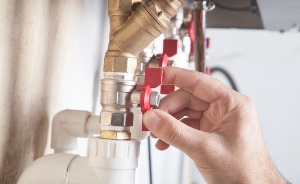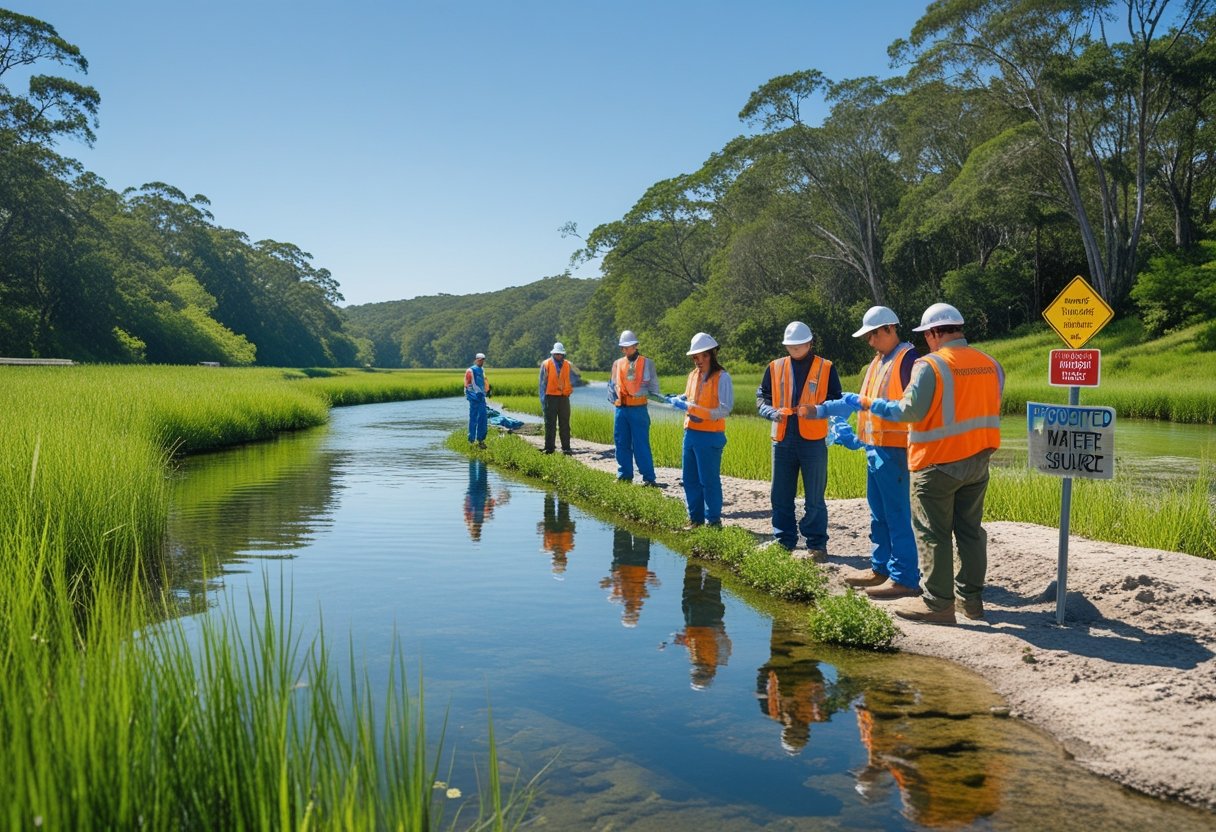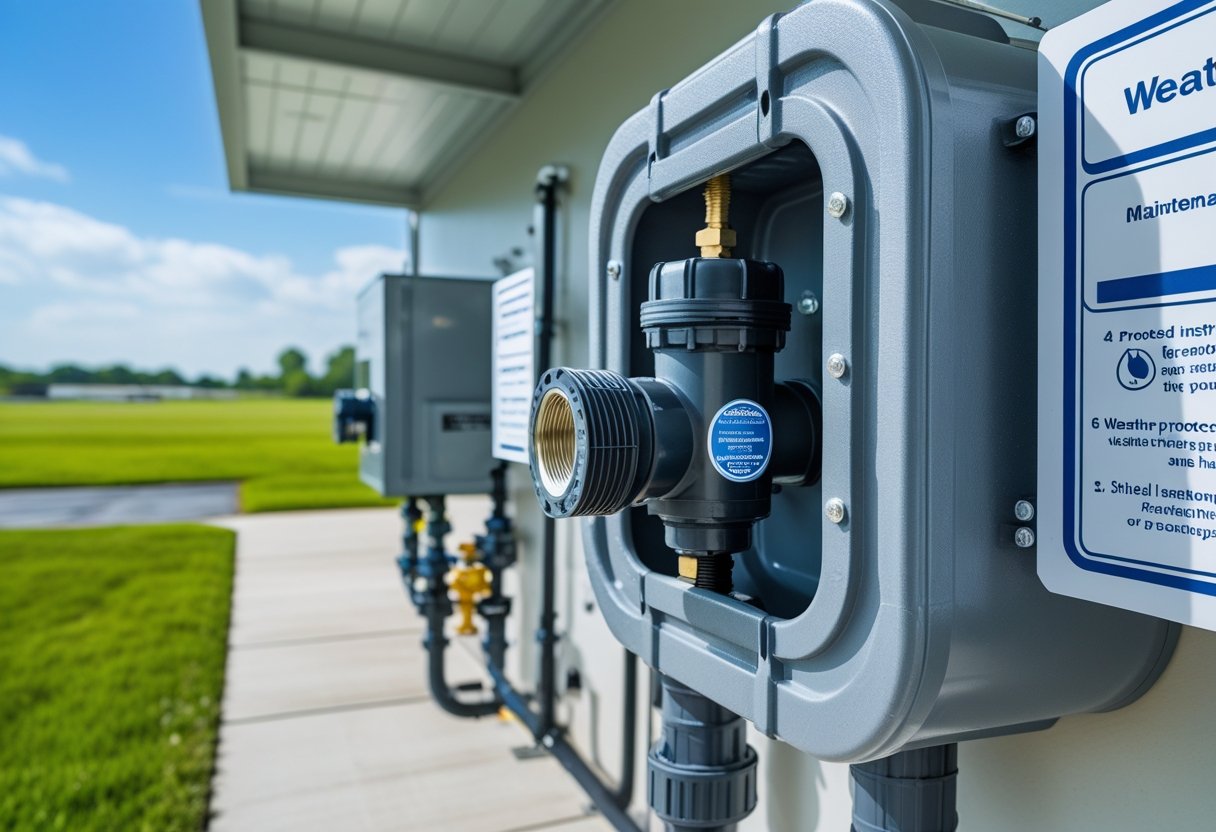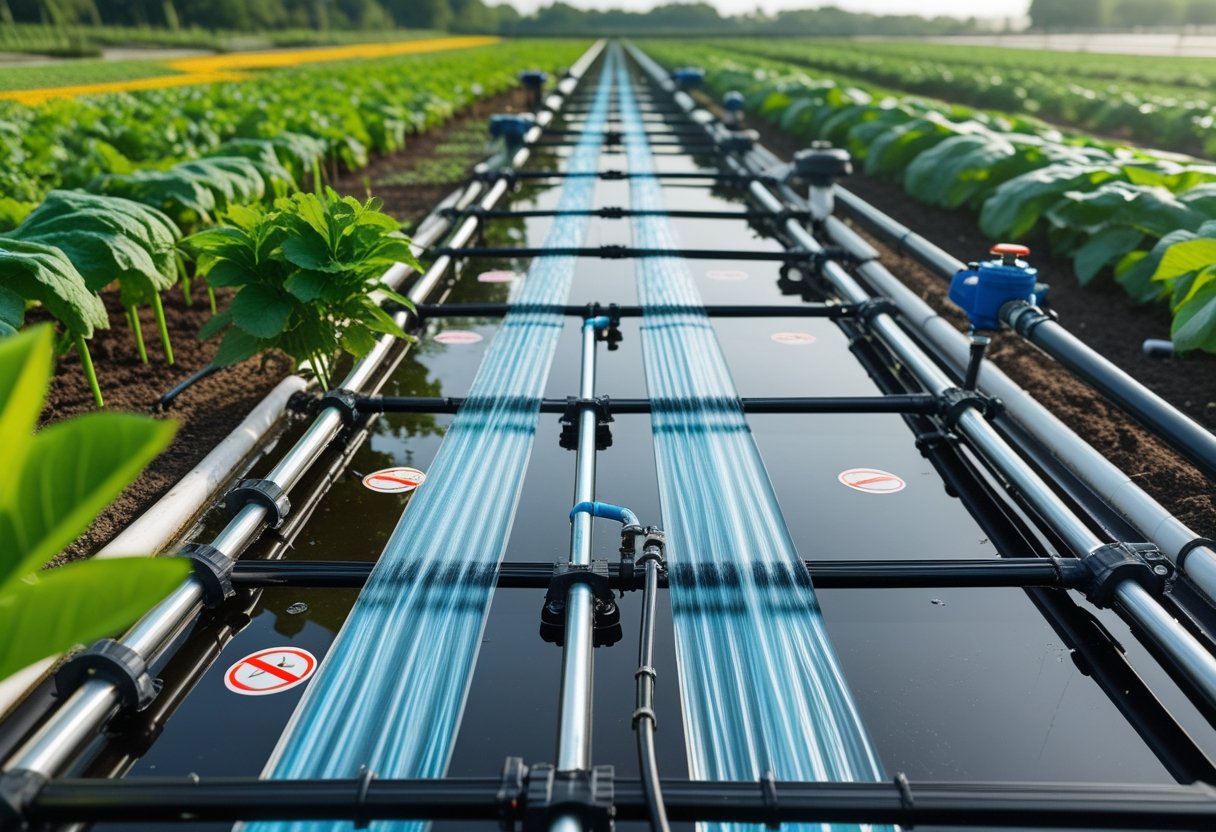Backflow testing is an essential process that ensures the safety and quality of your drinking water. This testing involves inspecting backflow prevention devices to verify they are functioning correctly, thereby protecting your water supply from contamination. By understanding how backflow testing works, you can appreciate its importance in maintaining a healthy environment for your home or business.
When backflow occurs, contaminated water can flow back into the clean water supply, leading to serious health risks. With reliable backflow testing, you can prevent these hazards and ensure compliance with local regulations. At Pacific Backflow, we specialize in providing thorough testing services to safeguard your water source, making it easier for you to focus on what matters most.
With nearly half a century of experience serving San Diego County, you can trust Pacific Backflow to deliver efficient testing, repairs, and installations tailored to your needs. Staying proactive with backflow testing not only protects your property but also contributes to a healthier community.
What Is Backflow Testing?
Backflow testing is a critical method used to protect your water supply from contamination. It ensures that the systems designed to maintain clean water are functioning effectively, directly impacting public health and safety.
Definition and Purpose
Backflow testing refers to the process of inspecting and verifying the effectiveness of backflow prevention devices in your plumbing system. These devices are essential because they prevent contaminated water from flowing back into your clean water supply, ensuring that your drinking water remains safe.
The primary purpose of backflow testing is to safeguard potable water by identifying any potential failures in the system. Regular testing is often mandated by local regulations, making it a necessary procedure for both residential and commercial properties.
Key Components Involved
Several key components are involved in backflow testing. The primary component is the backflow prevention device, such as a Reduced Pressure Zone (RPZ) valve or a Double Check Valve Assembly (DCVA). These devices are designed to allow water to flow in only one direction, preventing backflow.
During testing, specific equipment is used to simulate backflow conditions. This is crucial for assessing the device's integrity. Technicians, like those from Pacific Backflow, are trained to conduct these evaluations efficiently, ensuring all local standards are met.
How Backflow Testing Differs from Regular Plumbing Checks
Backflow testing is distinct from general plumbing inspections in its specific focus on preventing contamination of your water supply. While regular plumbing checks involve examining various systems for leaks or inefficiencies, backflow testing specifically measures the functionality of the devices that prevent dirty water from entering your clean water system.
Additionally, backflow testing requires specialized equipment and expertise to simulate potential backflow scenarios safely. Regular plumbing checks do not typically involve this level of scrutiny or testing, emphasizing the importance of scheduling backflow tests to ensure compliance and safety.
Understanding Backflow and Its Causes
Backflow in plumbing systems poses significant risks, including the contamination of your water supply. Understanding how backflow occurs and its primary causes is crucial for protecting your home and community.
How Backflow Occurs in Plumbing Systems
Backflow occurs when water flows in the reverse direction within plumbing systems. This phenomenon can contaminate your drinking water supply with harmful substances. There are two main ways backflow can happen: backpressure and backsiphonage.
- Backpressure happens when the pressure in a supply line exceeds that of the system it connects to. This can occur during water usage peaks.
- Backsiphonage occurs when there’s a sudden drop in water pressure, often due to issues like a main line break or excessive water use elsewhere in the system.
Both scenarios create conditions that allow contaminated water to flow backward, posing a risk to your health.
Causes of Backflow: Backpressure and Backsiphonage
Understanding backpressure and backsiphonage is essential for addressing potential backflow issues.
Backpressure can result from:
- Elevated tanks or pressurized systems.
- Nearby equipment or devices that create pressure differentials.
Backsiphonage often arises from:
- A sudden drop in piping system pressure.
- Events like firefighting, which can affect water distribution.
These phenomena can lead to water contamination, where pollutants can flow into your clean supply. Regular backflow testing, such as those offered by Pacific Backflow, ensures that these scenarios are monitored and managed effectively.
The Role of Cross-Connections in Contamination
Cross-connections are points in plumbing where potable water meets non-potable water sources. These connections can be particularly hazardous, as they create pathways for contaminants to enter clean water systems.
- Examples of cross-connections include irrigation systems, boilers, and fire sprinkler systems.
- Risks arise when there is a loss of pressure, allowing non-potable water to mix with your drinking supply.
To mitigate these risks, it’s crucial to have backflow prevention devices installed and routinely tested. This will help keep your water supply safe and in compliance with local regulations, securing your home from potential contamination.
For any backflow testing or installations, consider contacting Pacific Backflow to ensure the reliability of your water supply.
Health Risks and Consequences of Backflow
Backflow presents serious health risks by allowing contaminated water to flow back into the potable supply. Understanding the types of contaminants, the impact on public water supplies, and historical incidents is crucial for ensuring safe drinking water for everyone.
Types of Contaminants and Health Hazards
Backflow can introduce various harmful substances into your drinking water. Common contaminants include bacteria, viruses, and heavy metals.
- Bacteria and Viruses: These microorganisms can cause severe waterborne diseases such as gastroenteritis, which leads to vomiting and diarrhea.
- Heavy Metals: Contaminants like lead and copper can escape into the water supply, posing long-term health risks, including developmental issues in children.
Regular backflow testing is vital to identify and mitigate these risks. Services like those offered by Pacific Backflow can help maintain the safety of your water supply.
Impact on Public Water Supplies
Contaminated water can have a profound effect on broader public health. When backflow occurs, it can compromise entire water systems, leading to widespread illness and a loss of trust in local water authorities.
The introduction of harmful substances can overwhelm public health systems, resulting in costly responses to outbreaks. Municipalities are often required to conduct thorough testing and implement stringent safety measures to protect residents.
Failing a backflow test can trigger legal implications and necessitate immediate action, emphasizing the importance of consistent maintenance and awareness.
Notable Backflow Incidents and Outbreaks
There have been significant incidents linked to backflow that highlight the potential dangers.
For instance, in 2004, a backflow incident in a California community led to a widespread outbreak of E. coli, resulting in numerous hospitalizations. Such events serve as a warning about the importance of robust backflow prevention and testing.
These incidents demonstrate the dire consequences that can arise from backflow, reinforcing why regular servicing and compliance with local regulations are essential for protecting your drinking water. With dedicated services like Pacific Backflow, you can ensure your systems are effective and secure against contamination.
Backflow Prevention Devices and Systems
Backflow prevention devices and systems play a crucial role in protecting clean water supplies from contamination. Understanding their types, key features, and installation locations is essential for maintaining water safety and compliance with regulations.
Types of Backflow Preventers
There are several types of backflow preventers designed to stop contaminated water from reversing into clean water systems. Check valves serve as a basic form of prevention, allowing water to flow in one direction only. More advanced options include the double-check valve, which features two check valves in one unit.
The Reduced Pressure Zone Assembly (RPZA) is another effective option, providing a higher level of protection by maintaining a pressure differential and safeguarding against backpressure. Additionally, pressure vacuum breakers are utilized to prevent back siphonage, particularly in irrigation systems. Each type effectively mitigates the risk of contamination in different scenarios.
Key Features and How They Work
Backflow prevention devices operate based on specific mechanisms to ensure their effectiveness. Check valves function by closing off the flow when backpressure is detected, effectively blocking reverse flow. In contrast, double-check valves employ two independent check mechanisms to enhance reliability.
The RPZA utilizes a spring-loaded relief valve that opens in case of backpressure, allowing any contaminated water to be diverted away from the clean supply. Pressure vacuum breakers contain a float mechanism that maintains atmospheric pressure, preventing any negative pressure from causing backflow. Regular maintenance and testing of these devices ensure they function correctly and comply with safety regulations.
Where Backflow Devices Are Installed
Backflow prevention devices are typically installed at points in a water system where the risk of contamination is highest. Common locations include the connection points between public water systems and residential or commercial plumbing. For example, irrigation systems should have a properly installed RPZA or pressure vacuum breaker to prevent contamination from fertilizers and chemicals.
In industrial settings, backflow devices are often installed in areas where chemicals are handled or where water may be contaminated by processes. At Pacific Backflow, experts can assess your specific needs for device installation throughout San Diego County, ensuring compliance and protection for your water supply.
The Backflow Testing Process
Understanding the steps involved in backflow testing is essential to ensuring your water system remains safe. The process typically includes inspections, functional tests, and documentation to maintain compliance and protect your water supply.
Initial Visual Inspection
The first step in backflow testing involves a thorough visual inspection of the backflow prevention device. A certified backflow tester examines the device for any signs of damage, wear, or debris that could affect its functionality. They look for issues such as leaks, rust, and obstructions.
During this inspection, the tester will also verify that the device is correctly installed and meets all local regulations. Identifying potential problems at this stage can prevent more costly repairs down the line. Ensuring your backflow preventer is in excellent condition is crucial before moving to functional testing.
Functional and Pressure Testing
Following the visual inspection, functional and pressure testing takes place. This step assesses whether the backflow prevention device operates effectively under different pressure scenarios. The certified professional uses specialized equipment to simulate various conditions, ensuring the device can handle fluctuations in water pressure without allowing contaminants to flow back.
If the device fails during testing, a detailed assessment will occur to determine necessary repairs or replacements. Annual backflow testing is crucial for compliance and to ensure that your device is functioning as intended, safeguarding your clean water supply.
Documentation and Compliance
After the testing is completed, thorough documentation is crucial. The certified backflow tester prepares a detailed report reflecting the results of both the visual and functional tests. This report will include any findings, recommendations for repairs, and compliance status.
Pacific Backflow takes this a step further by submitting the required documentation to local water authorities on your behalf. They maintain detailed records to ensure compliance with regulations, allowing you to rest easy knowing that your property is protected. This proactive approach makes it simple for you to stay compliant with annual backflow testing requirements.
Regulations, Compliance, and Testing Frequency
Backflow testing is governed by a complex set of local regulations and plumbing codes. Understanding compliance requirements and testing frequency is essential for maintaining safe and clean water supply in your home or business.
Local Regulations and Plumbing Codes
Local regulations dictate how backflow prevention devices must be installed and maintained. Each jurisdiction may have different plumbing codes that outline specific requirements for testing frequency. For instance, in many areas, annual testing is required to ensure compliance with these codes.
Failure to adhere to local regulations can lead to fines and jeopardize the safety of your water supply. It is crucial to stay informed about your local laws and to contact a professional service for clarity.
Mandatory Testing Requirements
Most municipalities implement mandatory testing requirements for backflow devices to safeguard public water supplies. Frequently, regulations require testing at least once a year. This routine check ensures that all backflow preventers are functioning properly to protect against contamination.
By scheduling regular tests with a certified technician, you not only comply with legal obligations but also maintain the integrity of your clean water supply. Services, like those provided by Pacific Backflow, can help you navigate these requirements seamlessly.
Selecting Certified Professionals
Choosing a certified professional for backflow testing is vital in ensuring compliance with regulations and plumbing codes. Certified technicians possess the expertise to correctly assess, test, and repair backflow devices.
When selecting a service provider, verify their credentials and experience within your area. Companies like Pacific Backflow have built a reputation for quality service in San Diego County, ensuring that you receive not only reliable testing but also the right recommendations for maintenance and repairs when necessary.
Frequently Asked Questions
Many homeowners have questions related to backflow testing and prevention. Understanding costs, requirements, and procedures can help ensure your water supply remains safe and compliant with local standards.
How much does backflow testing typically cost?
The cost of backflow testing can vary based on location and service provider. Typically, you might expect fees ranging from $50 to $150 for a standard test. For comprehensive services, including repairs or installations, the price may increase. It's advisable to obtain quotes from local providers to get a more accurate estimate.
What are the residential requirements for backflow testing?
In most areas, residential properties with potential cross-connections must have backflow prevention devices. Local regulations usually mandate annual testing to ensure these devices function correctly. It's essential to check with your local water authority for specific requirements in your region.
Why is it necessary to test backflow prevention devices?
Testing backflow prevention devices is vital to ensure they effectively prevent contaminated water from entering your drinking supply. Regular testing identifies any malfunctions, protecting your health and compliance with local regulations. Ignoring this process can lead to serious health risks and legal issues.
How is a backflow prevention device test conducted?
A qualified technician conducts backflow testing by attaching a specialized test kit to the device. The test assesses whether the device is functioning correctly and preventing backflow. Any failures or issues will be documented, and recommendations for repairs will be provided if necessary.
What are the frequency guidelines for conducting backflow tests?
Generally, backflow testing should be performed at least once a year. In some cases, such as installations in high-risk areas or systems with frequent usage, more frequent testing may be required. Follow local regulations to determine the appropriate testing frequency for your system.
What regulations govern the inspection of backflow prevention systems?
Backflow prevention inspections are governed by local, state, and sometimes federal regulations. These regulations outline the standards for testing, installation, and maintenance of backflow prevention devices. Staying compliant is crucial, and working with a knowledgeable service provider like Pacific Backflow can help ensure adherence to these regulations.











